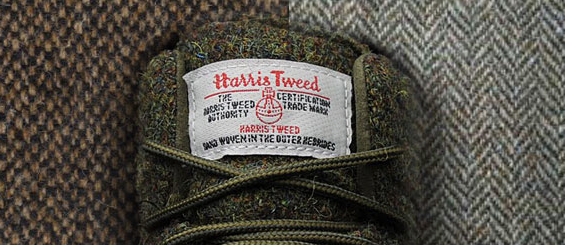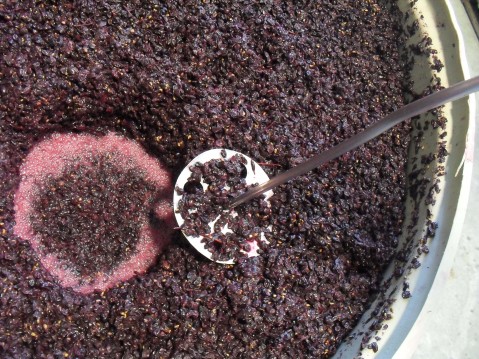
Some of the chief pleasures wine affords derive from the effects it produces on the special, hyper-sensitive tissue that lines the inside of our mouths – the way it grasps the lips, tongue and palate in a palpable, sensuous embrace.
The food science term for this is mouthfeel, a term I find unbearably clinical for such an intimate experience. A better choice is the ungeeky texture, a well-understood word with established connections to the world of familiar, ordinary things and everyday language.
Exactly the same in English and French, texture derives from the Latin word for something woven. Woven goods – textiles – are categorized and judged on the basis of the fineness or coarseness of the materials and the weave. Texture refers to both something inherent in a fabric’s structure and to the tactile sensation it produces when it comes into contact with the body.
I’d argue that texture is almost always the very first impression we have when tasting wine. Even before we’re aware of its flavors we have a generalized sense of how a wine feels. Unlike flavors, texture in wine isn’t something that has to be teased out, doesn’t seem to have a trajectory, doesn’t morph from one state to another. It’s perfectly stable from one mouthful to the next. It’s been suggested that the texture of a wine is a platform upon which its other sensations play out – I like the idea.

To help a Central Bottle guest think about texture, I like to use a fabric analogy: Some wines have a texture that’s like a silk tie or pocket square – sleek, slippery, unresisting. Others have the feel of a close-knit sweater or scarf (think lambswool here or maybe cashmere). There’s nap, but it’s fine, given a plush feel. Still others have a texture reminiscent of Harris Tweed — a bit coarse, nubby, fibrous, even scratchy.

The tactile joys of quality fabrics are habit-forming, and we seem to be able to enjoy all sorts of permutations. We can take equal pleasure in the frictionless slip of a silk stocking, the adhesive grip in a pair of leather gloves, and the cozy pile in a sheepskin-lined coat. It’s the same with wine – or ought to be. But what makes the texture of one different from another?
Texture in wine depends initially on the presence of tannin in grapeskins. Some varietals have richer concentrations of it (cabernet sauvignon; syrah) while (grignolino, pinot noir) have less. But the character these tannins assume in finished wine is heavily dependent on how they’re managed.

At what ripeness grapes are picked, how aggressively they are pressed, whether stems are included in the fermentation, how long skins and pips (seeds have tannin, too) are allowed to macerate and how frequently the cap is punched down — are all matters for human intervention and judgment. (Maturation in barrel does something to soften fruit tannins, but wood has its own tannin to add.)
Fine wine has an almost unlimited ability to please our senses, but that doesn’t mean that we get always get all we can out of it. My experience suggests that even though texture is something winemakers are paying increasing attention to, the way wine feels gets much less attention than it deserves. So here are some suggestions for how to be appreciate the feel of wine more, followed by tasting notes on three Central Bottle wines whose textural elements are analogous to something hanging in your closet.
Techniques
1. Begin by giving the wine time to make its tactile impression on you – and use the moments to mull this over as a quality separate from everything else. Heightened perception is often achieved by no more exotic means than just paying more attention.
2. Instead of rushing to tease out and articulate the inventory of fruits, vegetables, and minerals you detect (as is our sad habit these days), give a name to its feel: Is it a silken? Plush? Raspy? Something else?
3. Next, think about how this particular texture would play with food. Big, full-flavored dishes – especially if they’re meaty and a little fatty — can really benefit from a wine with plenty of chewy texture and a bit of astringency to them.
4. When you’re in the wineshop, learn to ask about how a wine feels not just how it tastes. I think you’ll see the eyes of the person who is waiting on you brighten at the question – and you’ll get a better overall picture of the wine before you buy.
Tasting Notes
Migliavacca Grignolino del Monferrato Casalese (Italy). Pale, limpid, ruby-pink hue. Scarcely darker than many rosés and with a sleek, almost textureless feel. Faint aromas of barely ripe red apples; mouth snmappy and quite dry with vivacious red fruits and a distinct earthy savor. [Silk hankie] Around $15.
La Valentina “Spelt” Montepulciano d’Abruzzo (Italy). Medium garnet hue with sweetish black cherry and earth-inflected aromas. Warm and fullish in the mouth with plenty of round, plummy black fruits, loamy earth, and an enveloping, slightly thick and cushy feel. Is Montepulciano of this stripe Italy’s answer to Argentine malbec? Has many of the same sweet, comforting qualities. [Cashmere scarf] Around $20
Tajinaste Valle de la Oratavo Tinto (Canary Islands, Spain) Medium garnet. Aromas of cedar, clove, and spruce forest. Mouth shows loamy elements over black cherry-like fruit. Some significantly raspy tannins here; lots of chewiness and texture. [Harris Tweed jacket] Around $27.
Reach me at stephenmeuse@icloud.com
Follow Stephen Meuse